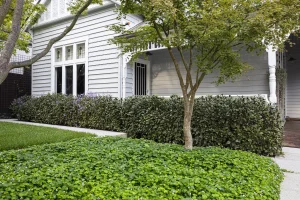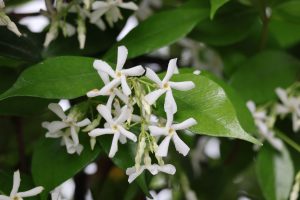Betula pendula ‘Moss White’, more commonly referred to as Silver Birch ‘Moss White’, are beautiful deciduous trees that make the perfect addition to any garden. While there is a wide variety of Silver Birch trees, this particular variety’s name ‘Moss White’ is derived from its bright white bark – which is a feature in its own right. Betula pendula, as the name suggests, have a pendulous form. This means that it has foliage or branching that weep, which creates a lovely softness to the tree. Silver Birches have bright green foliage that turns to a pale yellow in Autumn.

We recently used this incredible tree in our East Malvern project.
How to Use
This Silver Birch is perfect for planting on the street, on nature strips, parks, and in residential gardens (big and small). It’s quite a versatile plant and be grown as a feature (or specimen) tree or clump together to achieve a magical forest appeal. Once they reach maturity, you can expect your Silver Birch to grow to approx. 8 – 10m high.

How to Plant
This tree will thrive best in full sun or part shade position. It prefers moist, well-drained soil but will tolerate short periods of dry and wet weather. It’s a moderate growing tree
Care and Maintenance
Silver birches are relatively low-maintenance, but in terms of watering, they are shallow-rooted, so make sure you are adequately watering in summer. If you’re pruning your winter tree, it’s imperative to only do so in summer or Autumn. Pruning in winter or spring can cause bleeding. Bleeding is when sap leaks from a wound or pruning cut on a tree, shrub or woody climber. To read more about bleeding and how it can impact plants, check out this article from RHS here.
To view more of our past projects and the plants we used, click here.



